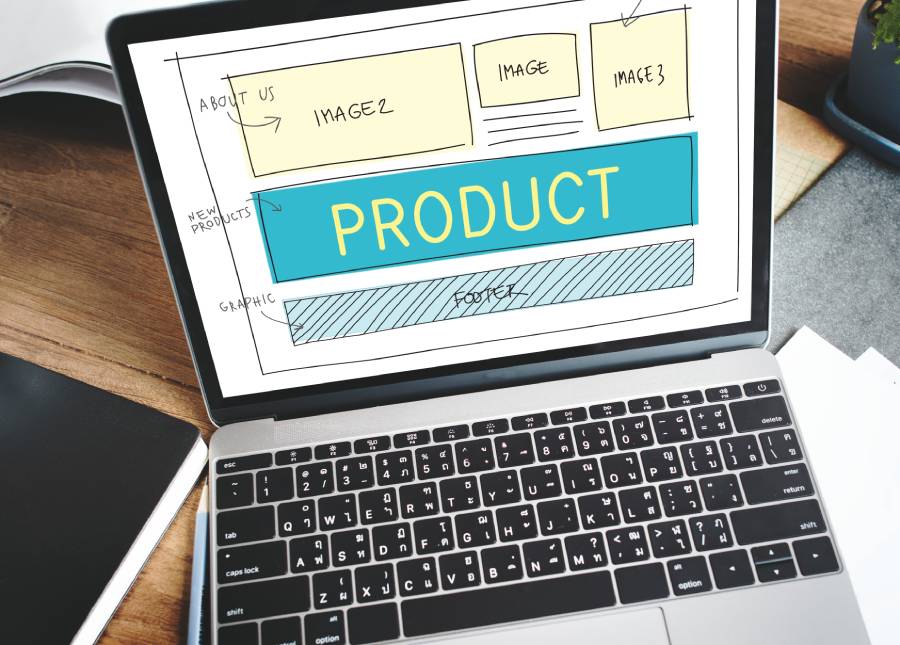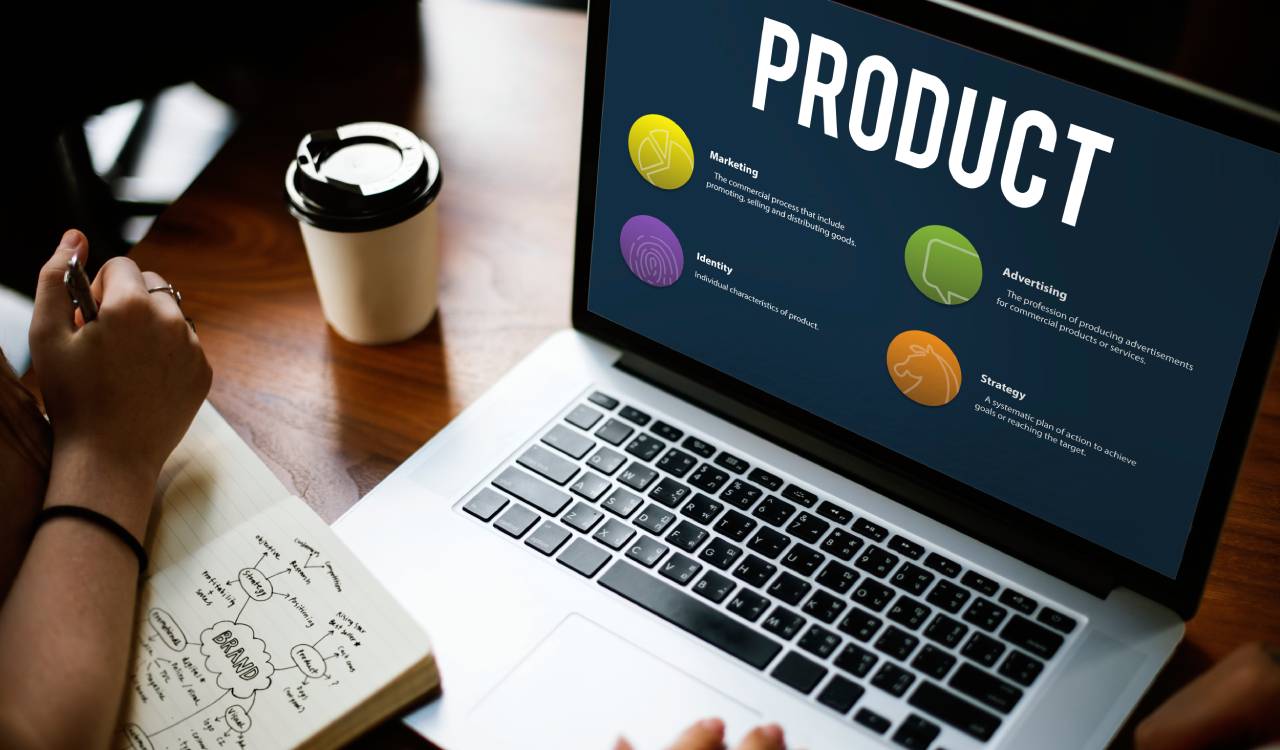Blogs

Best Practices for E-commerce Product Page Design
In E-Commerce Product page Design, the page undeniably serves as the heart of your website. Therefore, a well-designed product page plays a critical role in converting visitors into customers. Conversely, poorly designed pages often result in cart abandonment and significant revenue loss. To maximize sales effectively, it’s essential to ensure your product pages are not only visually appealing but also informative and user-friendly.
With this in mind, this blog delves into the best practices for e-commerce product page design. By consistently implementing these tips, you can significantly enhance customer experience and, as a result, boost sales.
Use High-Quality Product Images in E-commerce Product Design
e-commerce product design Images are crucial for online shopping, especially since users cannot touch or see products physically. In your e-commerce product page design, high-quality images play a key role in building trust and enhancing the shopping experience.
- Use high-resolution images to showcase product details clearly.
- Provide multiple images from different angles to give users a full view of the product.
- Include zoom-in features for users to examine intricate details.
- Display lifestyle images to show the product in use, helping customers visualize it in their own lives.
Optimized product images reduce uncertainty, build trust, and ultimately lead to higher conversion rates, making them an essential part of any effective.
Write Clear and Concise Product Descriptions
Your product descriptions should effectively inform and persuade customers to make a purchase.
- Firstly, highlight key features and benefits to provide essential information at a glance.
- Additionally, use bullet points to enhance readability and make details easy to skim.
- Moreover, avoid jargon and keep the language simple, ensuring all customers can understand the content effortlessly.
- Furthermore, focus on explaining how the product solves a problem or meets a specific need for the customer.
Finally, ensure your descriptions are SEO-friendly by incorporating target keywords, as this improves product visibility in search results.
Optimize for Mobile Users in E-commerce Product Design
More than 60% of e-commerce product page traffic comes from mobile devices.
- Ensure responsive design for seamless browsing across all devices.
- Optimize images and page load speed for mobile.
- Place call-to-action (CTA) buttons where they are easily accessible.
Mobile-friendly pages ensure a smooth shopping experience, encouraging users to complete their purchases.
Add Trust-Building Elements
Online shopping involves a level of uncertainty for customers. Add trust signals to ease doubts.
- Display customer reviews and ratings prominently.
- Include trust badges such as “Secure Checkout” or “Money-Back Guarantee.”
- Offer transparent return policies and shipping information.
Trust elements reassure customers, reducing hesitation and cart abandonment rates.
Incorporate Clear Call-to-Action (CTA) Buttons in E-commerce Product Design
CTAs are essential as they guide users toward the next step in their shopping journey.
- Firstly, use action-oriented text like “Add to Cart” or “Buy Now” to encourage immediate action.
- Additionally, choose contrasting colors for buttons to make them visually stand out from the rest of the page.
- Furthermore, place CTAs above the fold to ensure they are easily visible and accessible without scrolling.
Ultimately, effective CTAs not only drive conversions but also ensure a smooth and seamless buying process for customers.
Highlight Pricing and Offers
Transparency in pricing builds trust and avoids confusion during checkout.
- Display product prices clearly, including discounts and taxes.
- Highlight limited-time offers or bundle deals to create urgency.
- Use bold fonts or eye-catching designs for discounts and promotions.
Compelling pricing displays encourage customers to make quicker purchase decisions.
Use Breadcrumb Navigation in E-commerce Product Design
Breadcrumbs enhance website navigation, especially for users browsing multiple categories.
- Help users track their location on the site.
- Allow users to return to previous categories easily.
- Improve website SEO by creating structured internal links.
Breadcrumbs improve usability and create a better shopping experience.
Provide Comprehensive Product Details
Detailed specifications are vital for technical or high-value products.
- Include size, weight, material, and dimensions.
- Use tabs or accordions for an organized layout.
- Offer downloadable guides or manuals if applicable.
Comprehensive details reduce product returns and increase customer satisfaction.
Enable Social Sharing Options in E-commerce Product Design
Allow customers to share products with friends and family on social platforms.
- Add share buttons for Facebook, Twitter, and Instagram.
- Use clickable links for seamless sharing.
- Encourage users to tag your brand when sharing.
Social sharing increases brand visibility and drives organic traffic.
Optimize Page Load Speed
Slow-loading pages can frustrate users and, as a result, lead to higher bounce rates. Therefore, it’s essential to prioritize optimizing load speed as part of your product page design.
- Firstly, compress images and minimize heavy scripts to reduce page weight effectively.
- Additionally, use Content Delivery Networks (CDNs) for faster load times across various locations.
- Furthermore, regularly test page speed using tools like Google Page Speed Insights to identify and fix potential issues.
Ultimately, a fast-loading product page ensures a smooth shopping experience for users and significantly boosts SEO rankings. Consequently, optimizing page speed is a critical aspect of creating a successful product page design.
Use Videos to Enhance Engagement in E-commerce Product Design
Videos engage users and provide better product insights, making them an essential part of e-commerce product page design.
- Create short videos demonstrating product use.
- Add testimonials or unboxing videos to build trust.
- Use autoplay wisely to avoid annoying users.
Video content keeps users on your page longer, boosting engagement and conversion rates, making it a valuable addition to your e-commerce product page design.
Make Use of Product Recommendations
Cross-sell and upsell related products to increase the average order value.
- Display “Customers also bought” or “Frequently bought together” sections.
- Personalize recommendations based on browsing history.
- Highlight complementary products that enhance usability.
- Personalized recommendations encourage users to explore more products.
Benefits
Enhanced User Experience
By focusing on clean layouts and intuitive navigation, e-commerce product design ensures a seamless and enjoyable shopping experience. Users can easily find and engage with product information, increasing the likelihood of conversions.Improved Conversion Rates
Optimizing design with compelling descriptions, high-quality images, and clear CTAs leads to better customer decision-making. This translates to higher conversion rates and more sales.Higher Search Engine Rankings
Adhering to SEO-friendly practices in e-commerce product design improves your page visibility in search results. Enhanced rankings attract more organic traffic, leading to increased exposure and potential customers.Increased Customer Trust
Including trust signals like reviews, ratings, and secure payment options builds credibility. An effective e-commerce product design reassures customers, fostering trust in your brand and products.Mobile-Friendly Accessibility
With responsive e-commerce product design, your pages are optimized for all devices, particularly mobile users. This ensures you cater to the growing number of shoppers using smartphones and tablets.

Conclusion
A well-crafted e-commerce product design is essential for driving sales and retaining customers. The right design not only enhances user experience but also improves SEO, which in turn increases visibility and conversions.
Key elements of a successful e-commerce product page design include high-quality images, clear product descriptions, and user-friendly navigation. These elements make it easier for customers to make informed purchase decisions. Furthermore, incorporating trust signals such as customer reviews and secure payment options can significantly improve conversion rates.
Regularly updating and optimizing your page design is also crucial. Testing various design elements, such as CTA buttons or page load speed, can lead to higher engagement and reduced bounce rates. Ultimately, a well-designed e-commerce product page is a powerful tool that boosts sales and fosters customer loyalty.
Also Read This:



